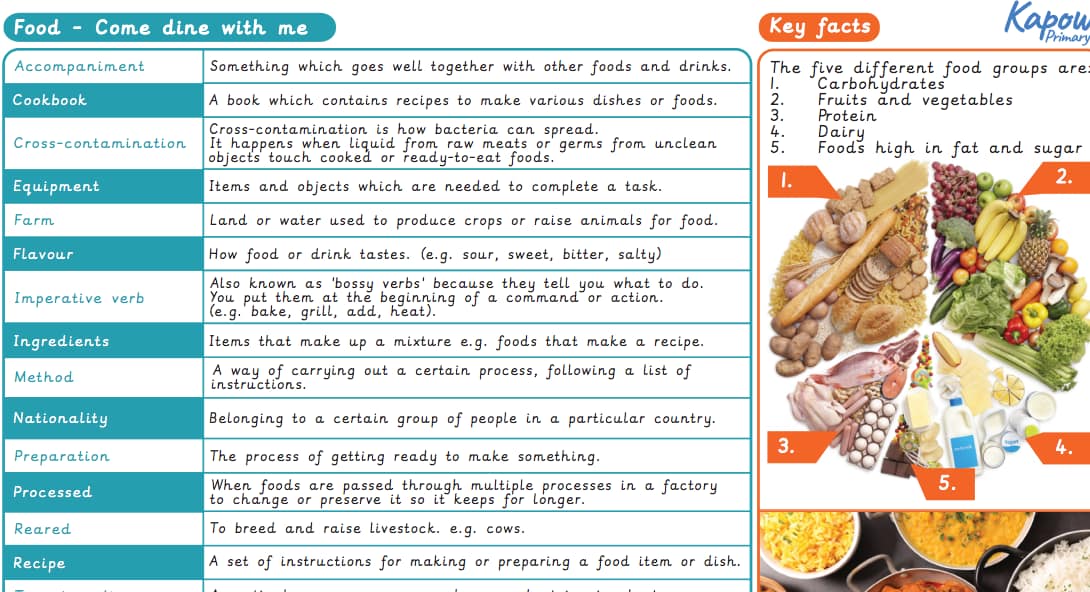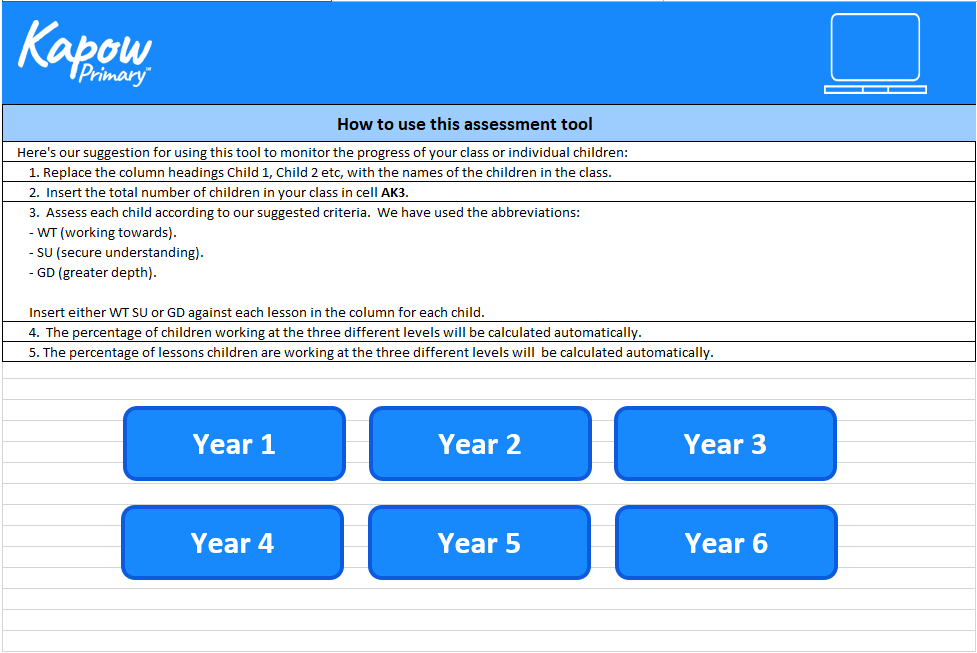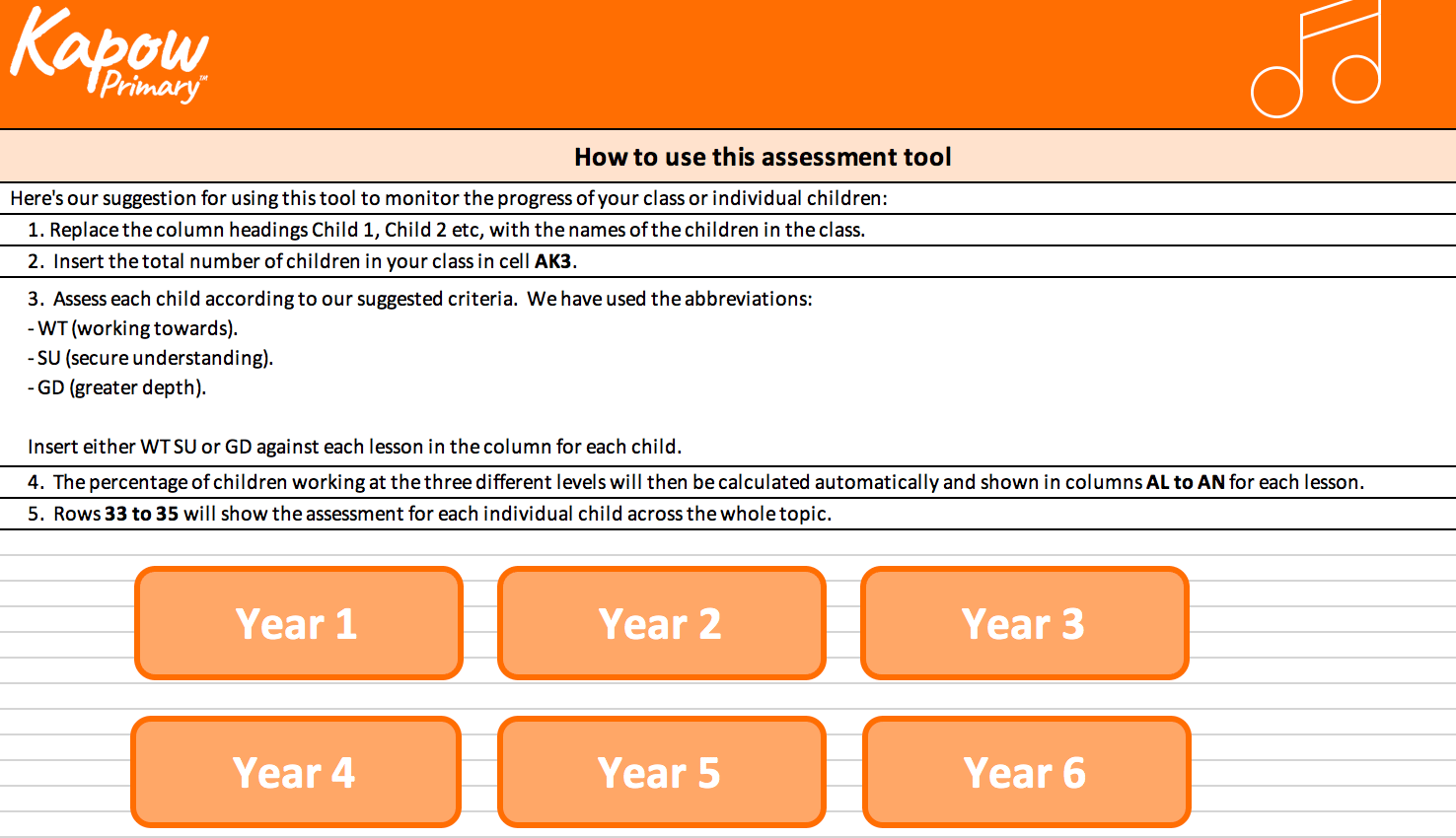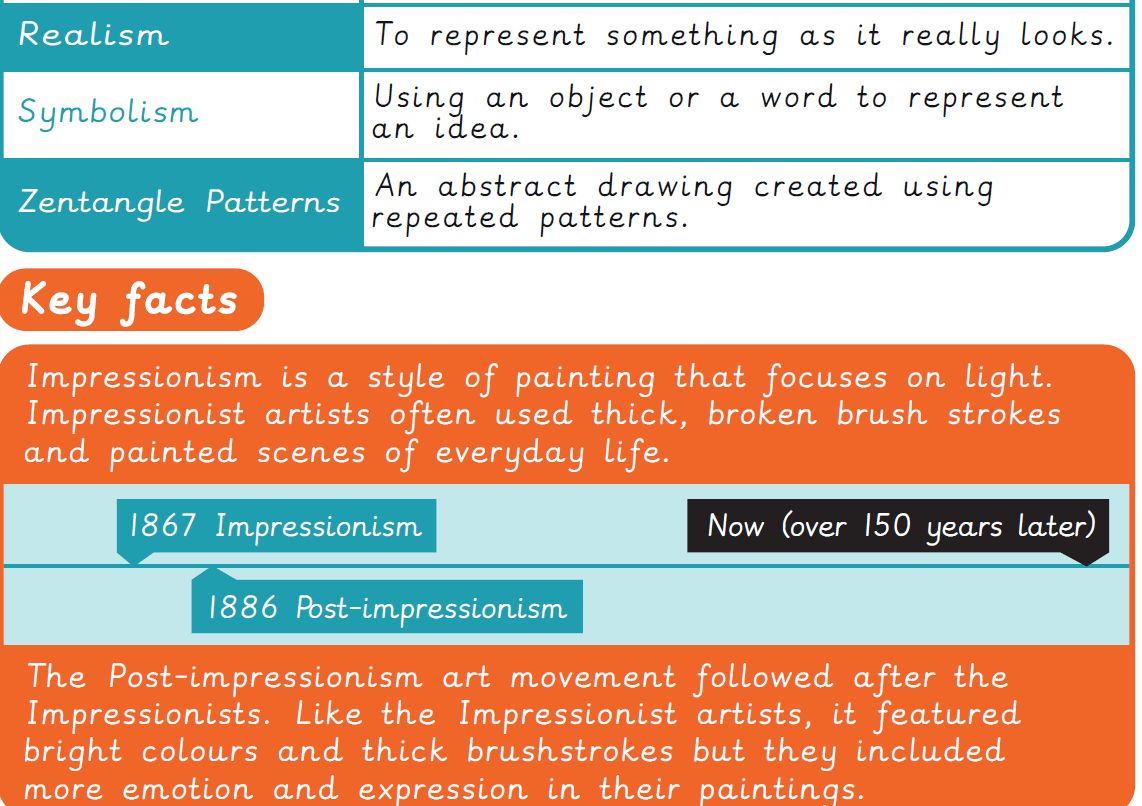
A Knowledge Organiser that captures the essential knowledge and skills learnt throughout the unit Archived – Art and design, Year 6, Art and design skills.
This resource supports pupils in deepening their understanding of key artistic styles and techniques, including abstract art, symbolism, realism, and the concept of mindfulness in creative practice. It introduces important terminology such as “herringbone,” “polyprint tile,” and “zentangle patterns,” alongside the design concept of prototyping. Pupils explore the work of influential artists and designers like Claude Monet, Edgar Degas, William Morris, and milliners such as Stephen Jones and Bundle MacLaren. The resource offers a strong foundation in recognising different art movements, including Impressionism and Post-impressionism, fostering analytical skills and creativity through both historical context and hands-on exploration.
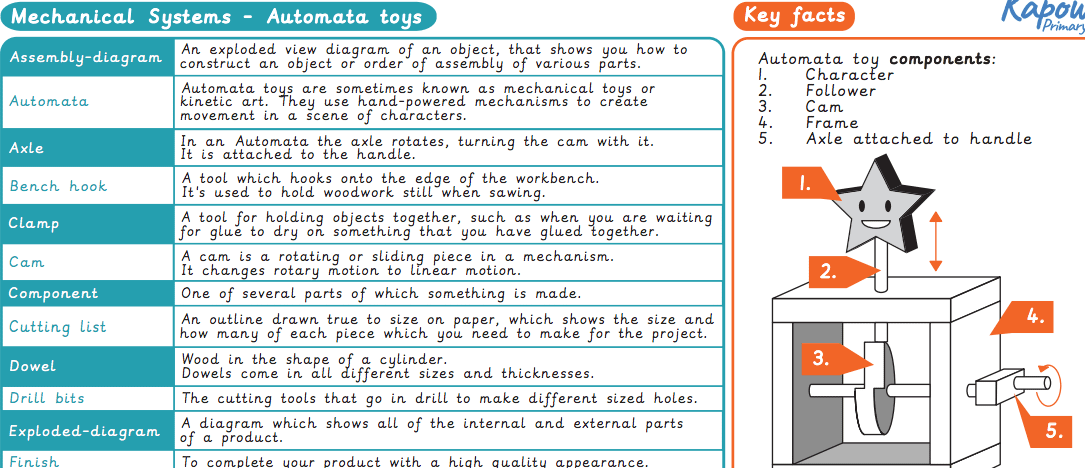
A Knowledge organiser that captures the essential knowledge and skills learnt throughout the unit Archived – Design and technology, Year 6, Mechanical systems: Automata toys.
This resource introduces pupils to the mechanical systems behind Automata toys, sometimes referred to as mechanical or kinetic art. It explains how these toys use hand-powered mechanisms to create movement through key components such as cams, followers, axles, frames, and characters. The organiser defines important tools and materials like dowels, clamps, and drill bits, and includes a visual guide to different cam shapes—round, snail, and ellipse—demonstrating how they produce varied motion effects. Pupils are also introduced to terminology such as “exploded diagram,” “cutting list,” and “linkage,” supporting the development of practical skills and design vocabulary needed to create functioning mechanical toys.
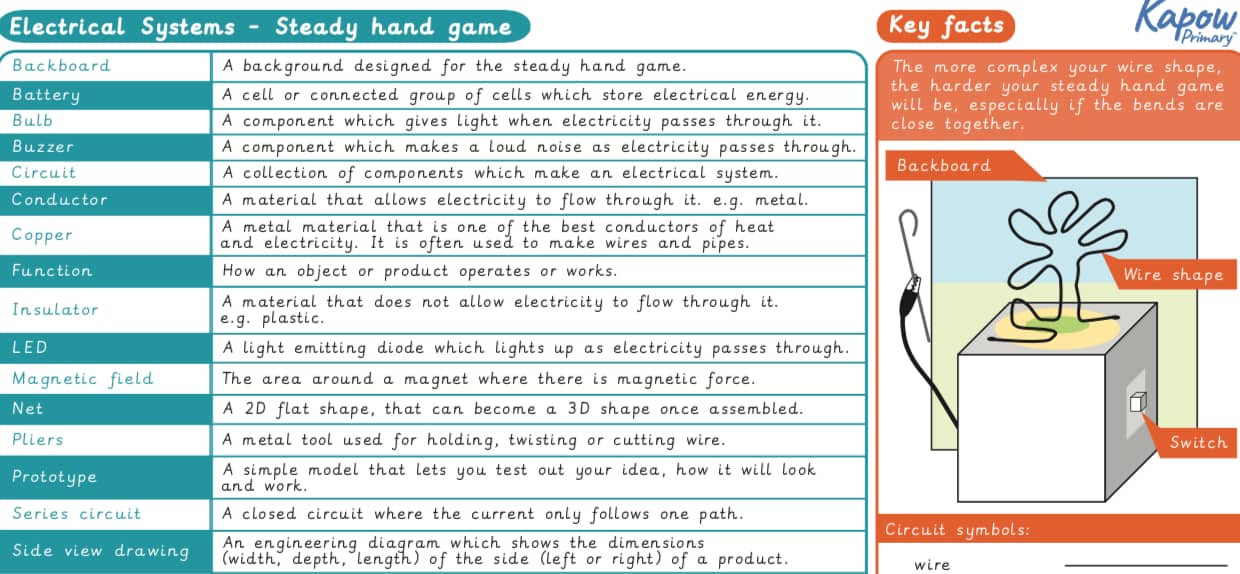
A Knowledge organiser that captures the essential knowledge and skills learnt throughout the unit Design and Technology, Year 6, Electrical Systems – Steady Hand Game.
This resource is designed to support the pupils as they explore how electrical circuits and components are used to create interactive games. It introduces key vocabulary such as circuit, conductor, switch, buzzer, and series circuit, helping the pupils understand how electrical systems function. The pupils will learn how to use materials like copper wire to create a conductive path, integrate switches to control circuits, and design a challenging steady hand game that tests precision and coordination. It is perfect for consolidating essential knowledge and fostering creativity by allowing the pupils to design, build, and test their own electrical games.
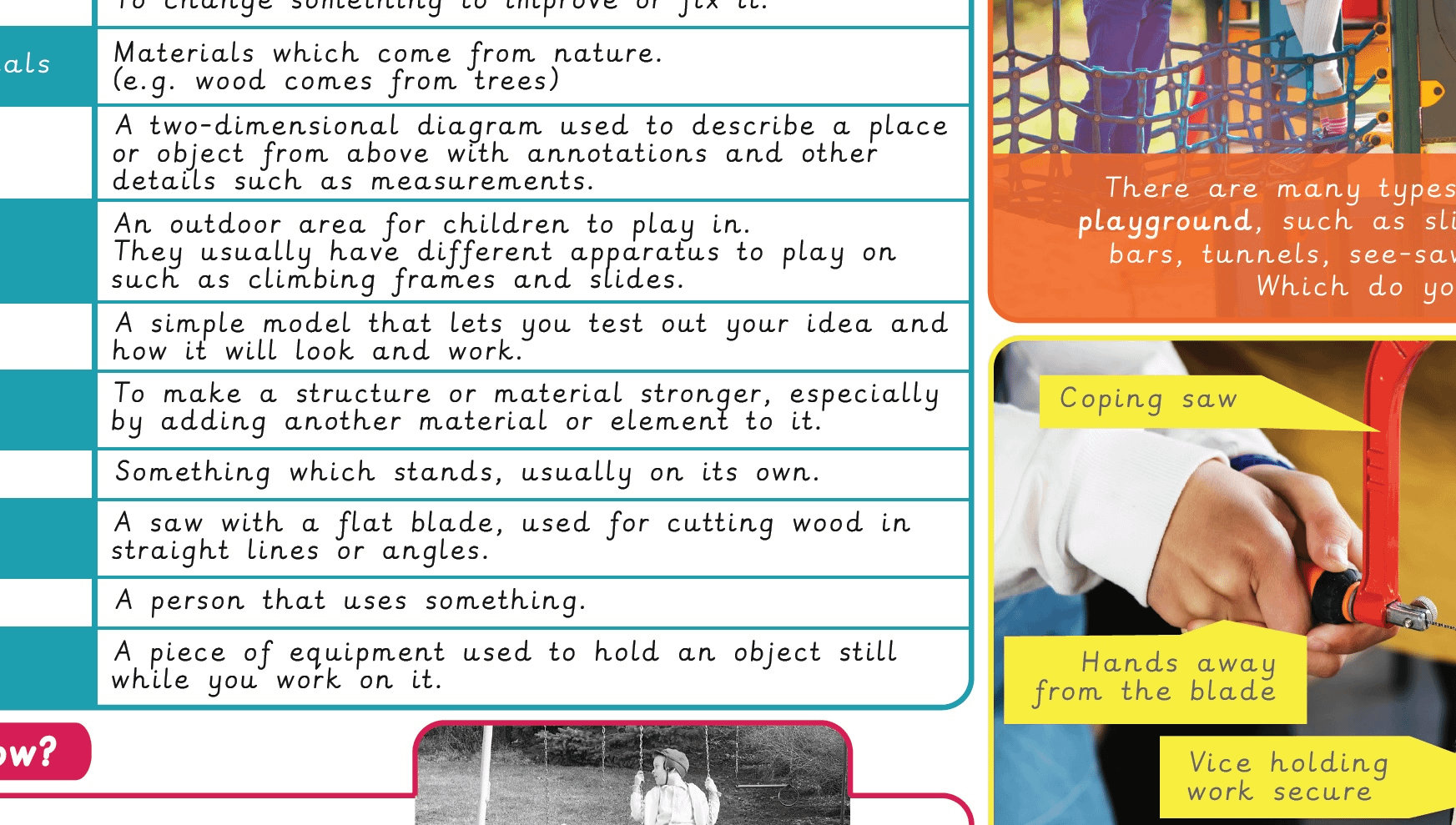
A Knowledge organiser that captures the essential knowledge and skills learnt throughout the unit Design and Technology, Year 6, Structure – Playgrounds.
This resource is designed to support the pupils as they explore the design and construction of playground structures. It introduces key vocabulary such as apparatus, dowel, reinforce, prototype, and plan view, helping the pupils develop an understanding of how different materials and techniques are used to create strong and safe structures. The pupils will also learn about woodworking tools, including the coping saw, tenon saw, vice, and bench hook, which are essential for accurate cutting and assembly. It is perfect for consolidating essential knowledge and fostering creativity by allowing the pupils to design and build their own playground models.
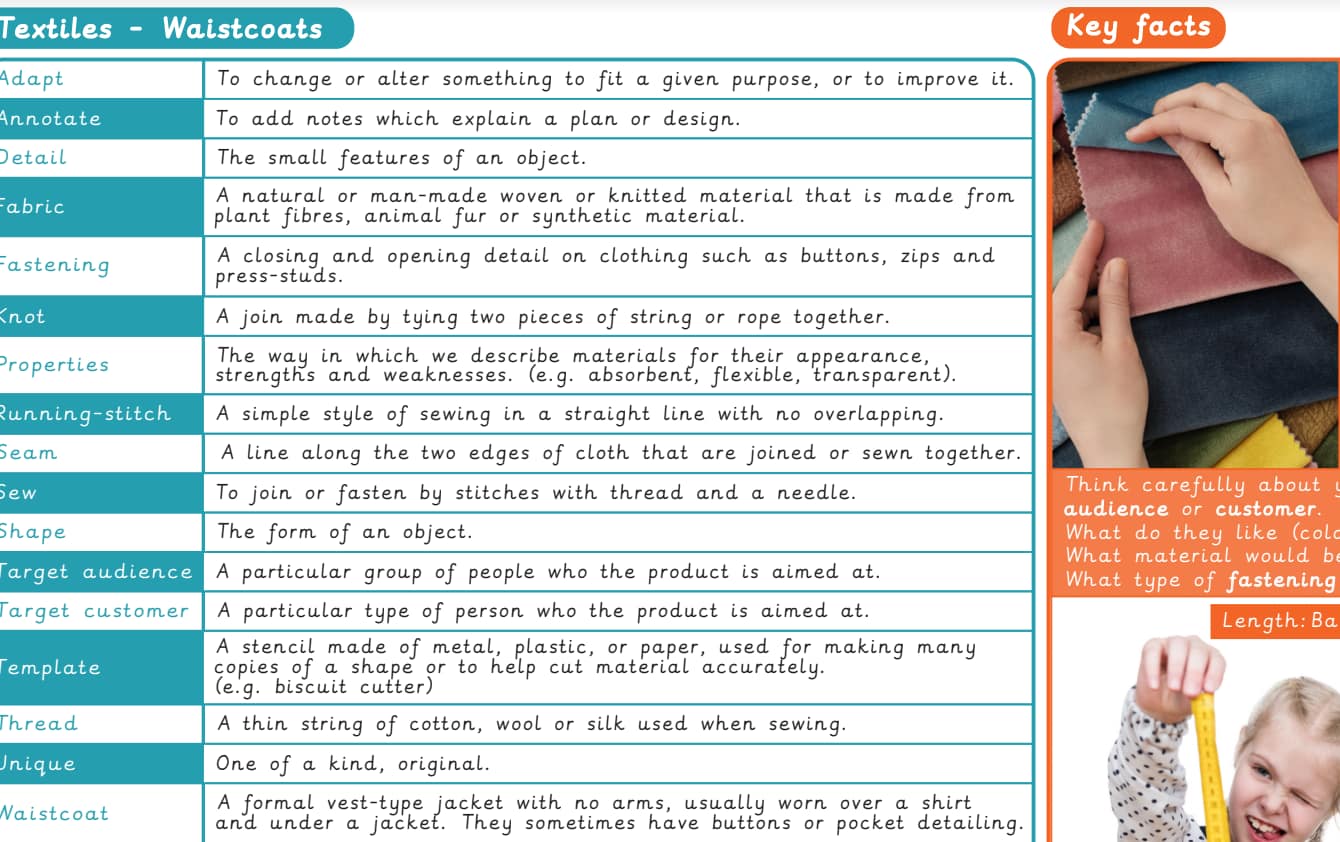
A Knowledge organiser that captures the essential knowledge and skills learnt throughout the unit Design and Technology, Year 6, Textiles – Waistcoats.
This resource is designed to support the pupils as they explore the process of designing and making a waistcoat. It introduces key vocabulary such as fabric, seam, fastening, running-stitch, and template, helping the pupils develop an understanding of textile construction. The pupils will learn how to take accurate measurements, select appropriate materials, and apply sewing techniques to create a functional and well-fitted waistcoat. It is perfect for consolidating essential knowledge and fostering creativity by allowing the pupils to plan, design, and sew a unique garment. Through hands-on activities, they will refine their fine motor skills, practise precision in cutting and stitching, and evaluate their designs for both function and aesthetics. The unit also encourages problem-solving and an appreciation for clothing design, helping the pupils develop confidence in working with textiles.
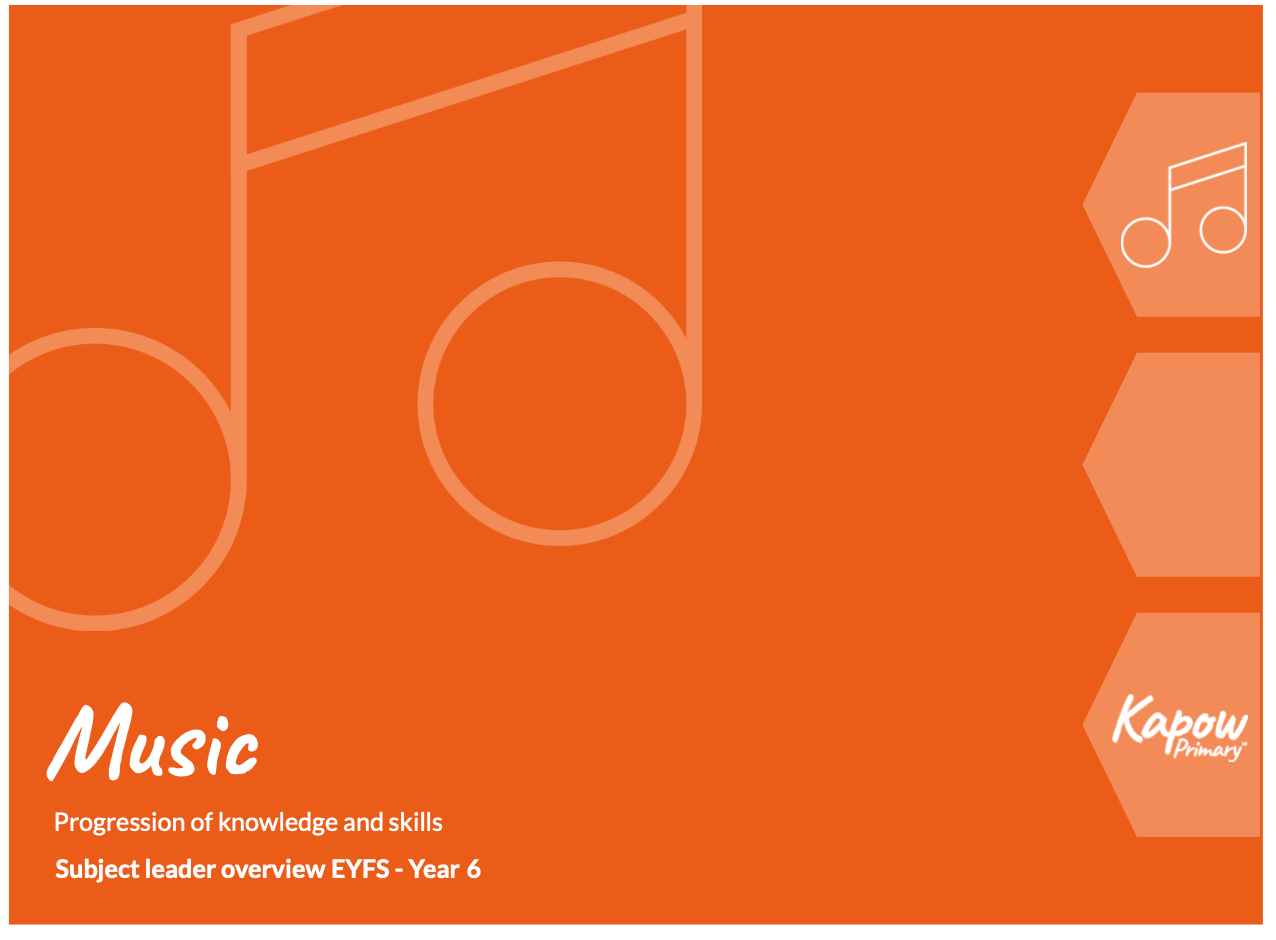
Please note this document was recently updated to reflect changes to our long-term plan. See the Music: Long-term plan to find out more about these changes.


